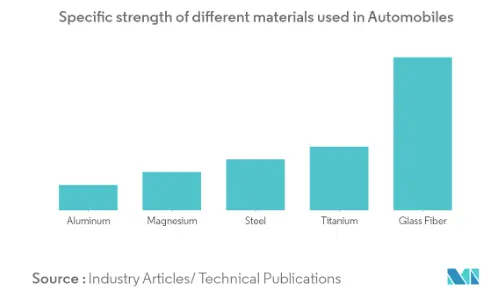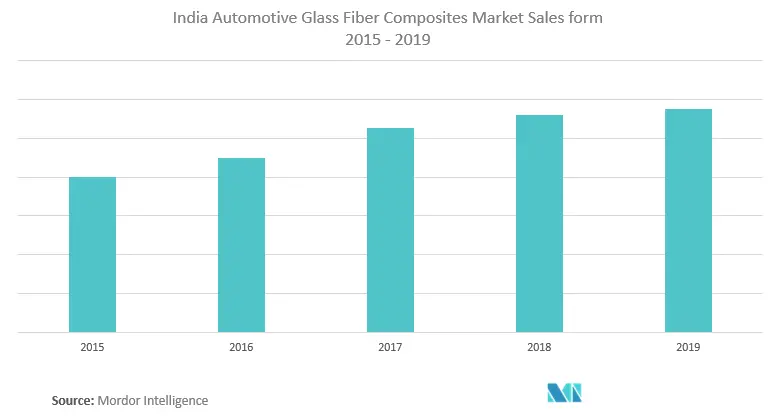Market Trends of India Automotive Glass Fiber Composites Industry
This section covers the major market trends shaping the India Automotive Glass Fiber Composites Market according to our research experts:
Increasing Adoption of Glass Fiber Composites in Automobiles
Although automobiles have been around for more than a century, the materials they are made of have mostly remained the same. Only since the past few decades that advanced materials, ranging from magnesium alloys to glass fiber composites, have made their way into new-generation cars. Advanced materials, such as glass fiber composites, are essential for boosting modern cars' fuel economy and maintaining performance and safety. Since it takes lesser energy to accelerate a lighter object than a heavier one, lightweight materials offer great potential for increasing vehicle efficiency. A 10% reduction in the vehicle's weight can transpire to a 6-8% increase in fuel economy.
Manufacturers are reducing overall vehicle weight, which lowers the energy required to operate the vehicle, increasing fuel economy. The Body-In-White system is the critical focal point for automakers looking for fuel savings because of its weight reduction potential, importance to crash safety, and impact on compounded weight reduction for other sub-systems, such as the powertrain.
Glass fiber composites are materials that have become popular in the past few years. One of the reasons for fiberglass composite's relative success is that it has several advantages over steel. It is corrosion-resistant, has significant chemical resistance, and is lightweight (three times less dense than steel). Fiberglass composite is mainly used in bumpers, hoods, and casings. Another area where this material is used is V-belts and timing belts, where glass strings are impregnated with rubber acting as reinforcement. Abrasion resistance is one other advantage of the fiberglass composite, which is why it is used for producing clutches and brake pads. Clutch disks are reinforced with woven fiberglass composites to maintain their integrity.

India is Anticipated to Become the Fastest Growing Market
India is touted to be the fastest-growing market due to the presence of many car manufacturers, such as Maruti Suzuki, Mahindra & Mahindra, Tata Motors, and Toyota Kirloskar Motors, etc., who are adopting glass fiber composites in their cars. Government regulations, such as the greenhouse gas emission target, also paved the way for OEMs to incorporate lightweight materials to decrease the overall vehicle weight.
Today, India is one of the leading automobile manufacturing countries globally. More than 4.4 million passenger cars annually sold in 2019. With an increase in the production of passenger vehicles and SUVs, the demand for fiberglass in the reinforcements of automotive components is expected to increase significantly during the forecast period.
Over in India, Maruti Suzuki has optimized the overall system like instead of manufacturing separate components. Glass fiber can improve energy absorption in case of a car crash. All this has improved the overall performance and has helped achieve an efficient platform, optimized structures, and advanced materials. Also, there is growing importance being given to lightweight glass fiber composites and its recyclability process due to regulations to limit GHG emissions from vehicles.


